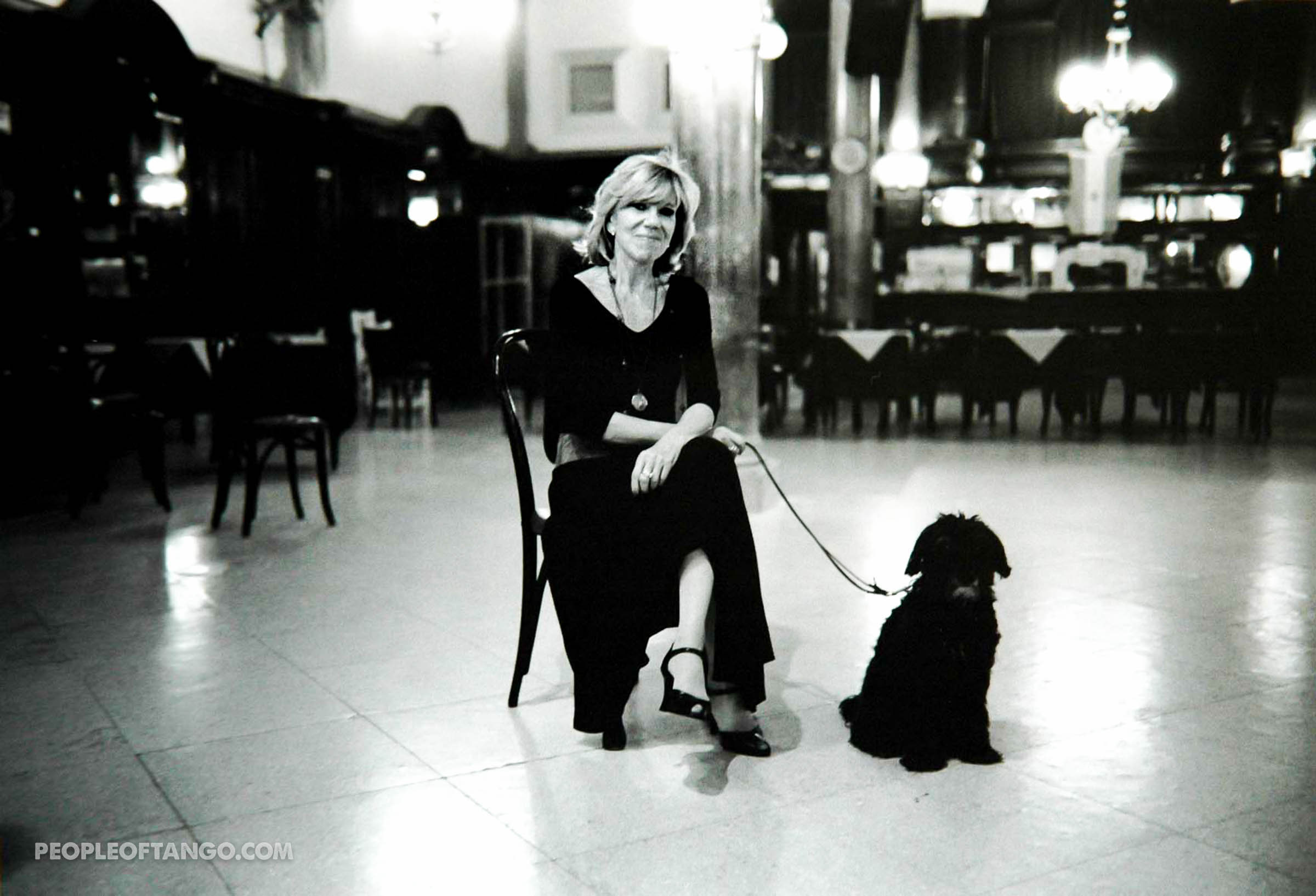Eleonora Brantz. Photographed at Confiteria Ideal, 2006.
I met Eleonora at the time of my life when I spent far too many hours in La Confiteria Ideal dancing tango.
Back home, they say “Show me a good pool player and I’ll show you a man with a misspent youth” (Mark Twain). I suppose the same can be said of tango dancers. If you dance too well, some responsibilities were neglected along the way
Eleonora came from Europe each year to dance. She was part of that flock that migrated from the Northern Hemisphere during their winter. She was never sure how long she would stay. She brought her dog.
I asked her if I could take her picture. I shot film back then. 36 shots of celluloid rolling through a mechanically-pure Leica M6. The satisfying crank of a thumb lever followed every press of the shutter. A finished roll meant a trip to the lab and then a 24-hour wait before I would even know if the film had exposed properly. I was much more patient back then.
Eleonora and I picked a time to go to the Ideal between milongas. As expected, the place was empty. For the past 20 years, if you weren’t a dancer, you didn’t go to the Ideal — unless you had been duped. Uncertain century-old chairs, waiters in frayed coats and tattered attitudes, bathrooms whose stench rivaled a train station and food christened with botulism kept normal people away.
But not dancers. The dance floor was sacred and we knew it and we gathered there to touch that sacredness together.
Eleonora showed up with her dog. She told me that she had thought it over and there were two pictures she wanted: one was with her dog and the other with Pedro, a waiter (the one who smiled more often than he scowled). Those were the two pictures we shot that day and how I remember Eleonora with her long body, her deep need of tango and her dog.
Eleonora does not come to Argentina now, but occasionally I get an email from her. She wrote me when her dog died and again when Pedro passed away. So much of what was in this photograph is gone. And now the Ideal has fallen silent and there are no longer milongas there.
There are times when a photo feels like the past rebuking the present.
